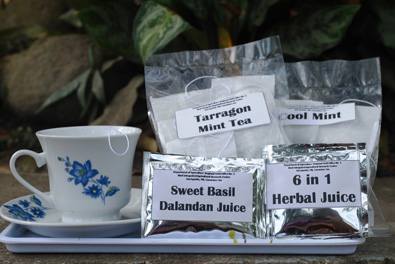They may be little, but they do wonders to make our foods palatable and appetizing. Enriching flavors and bringing out aroma–these herbs and spices are already parts of the Filipino cuisine that we simply cannot live without. Beyond food, they are also being utilized for their medicinal and cosmeceutical values.
According to Ms. Luz Marcelino, manager of the Bicol Integrated Agricultural Research Center (BIARC), it is of significant contribution to the agriculture sector to explore the potentials of herbs and spices for entrepreneurial opportunities. Thus, these plants should be conserved and utilized for their medicinal value, in terms of their nutritional value, they should be promoted as additives to local and national food cuisines.

“At present, many of these indigenous herbs and spices are not yet fully utilized because of lack of knowledge and information on their economic importance, and their values as food and as affordable sources of nutrients and medicine are oftern undermined. If they will be given full attention, they could help us in addressing food shortage, high cost of medicine, and the likes,” Marcelino said.
In line with the Indigenous Plant for Health and Wellness Program of the Department of Agriculture (DA), BIARC, in collaboration with the Bureau of Agricultural Research (BAR), embarked on the project, “Collection, Propagation Techniques of Indigenous Herbs, Spices and Medicinal Plants and Establishment of Demo Nursery”. The project aims to further explore the potentials of indigenous herbs, spices, and medicinal plants in the Bicol region.
As part of the postharvest processing activities, BIARC through its Product Development Unit developed suitable drying, dehydration, and powdering techniques for the local use of the herbs and spices.. This resulted in the production of various by-products including tarragon mint tea, cool mint tea, sweet basil dalandan juice, and 6-in-1 herbal juice, among others. Some of these products were exhibited during the 1st National Community-based Participatory Action Research (CPAR) Congress held in February 2014 at the Manila Hotel.
In coordination with the Provincial Agricultural Offices and Municipal Agricultural Services, there are 46 different kinds of herbs and spices, and 21 known medicinal plants identified and collected in different areas in the region. These were planted in BIARC to serve as mother plant and of planting materials for propagation.
To date, 11, 831 assorted kinds of herbs and spices, and medicinal plants have been propagated. Of these, 3,039 have been distributed to interested clients and stakeholders. ### (Anne Camille B. Brion)
Source and image: bar.gov.ph






